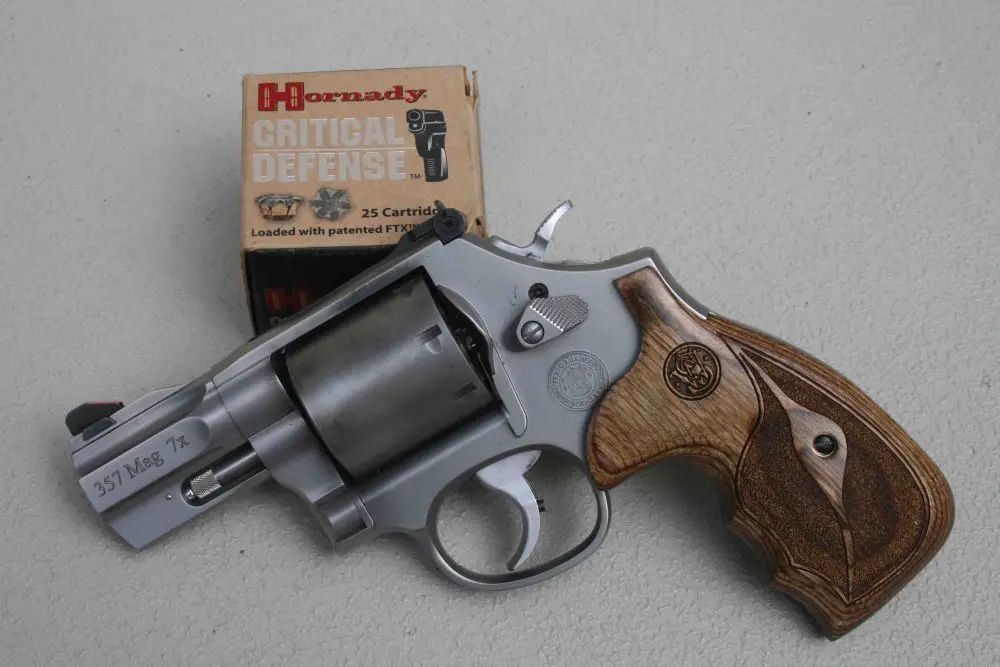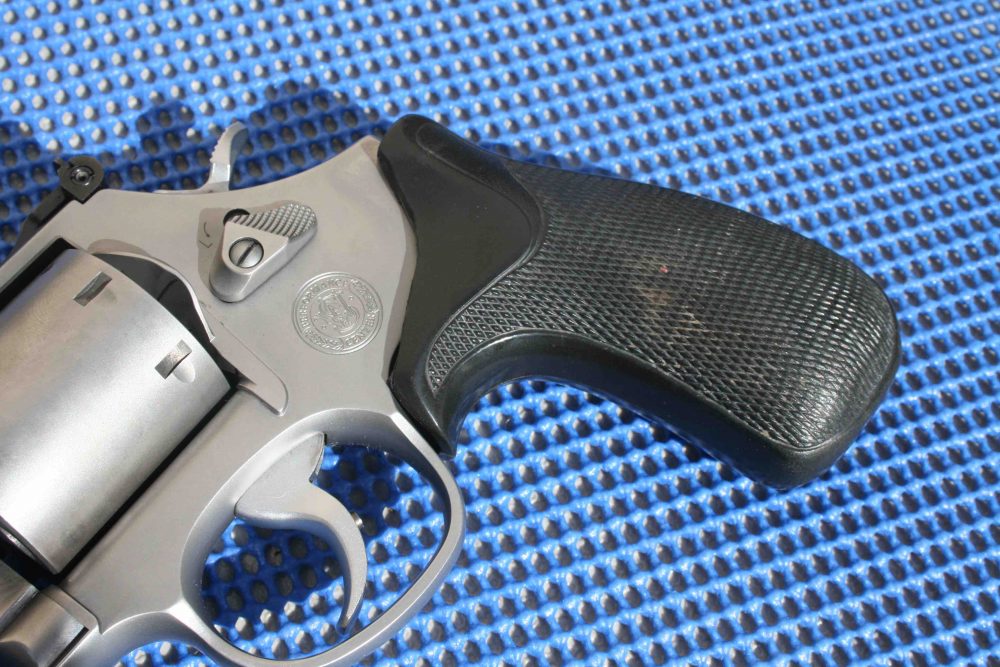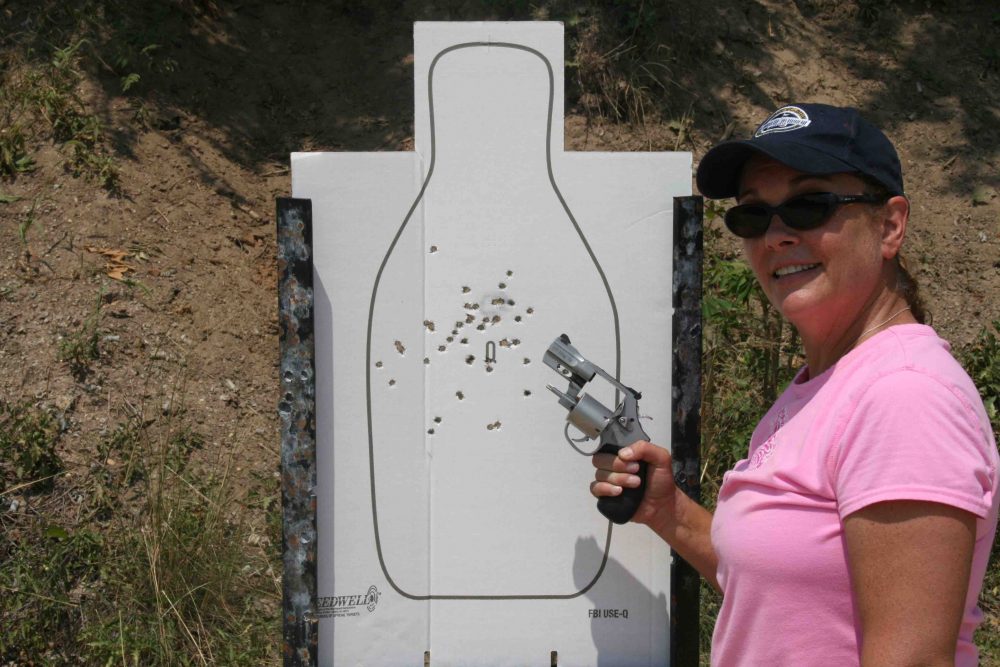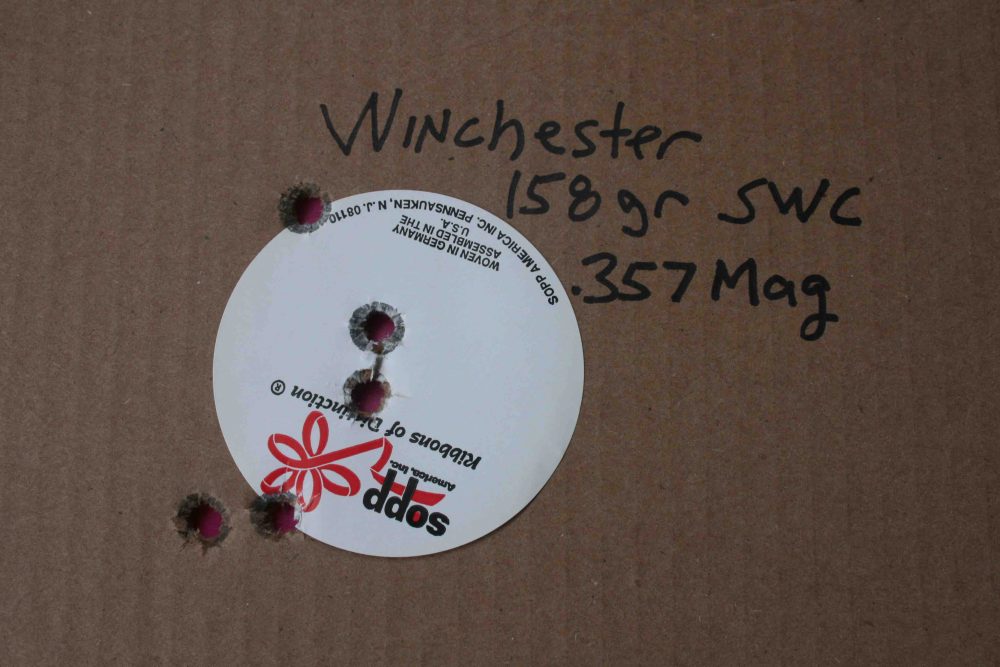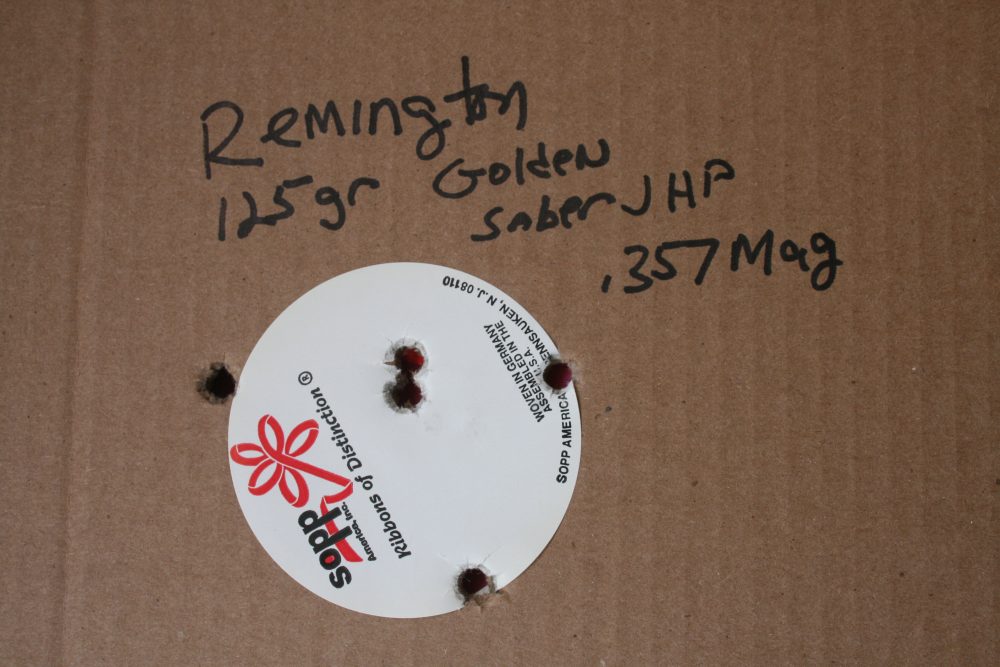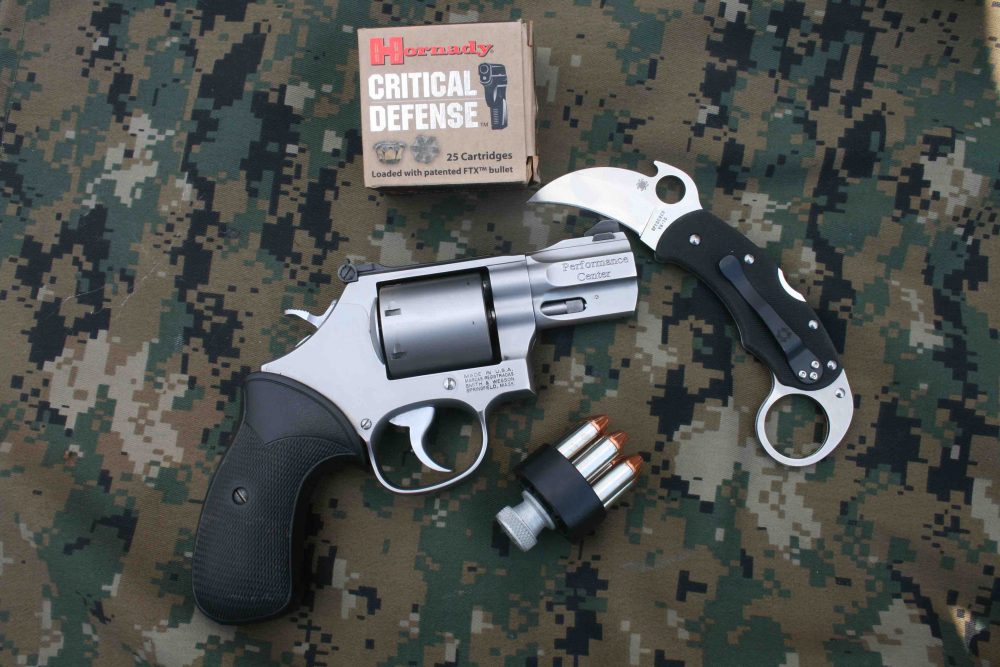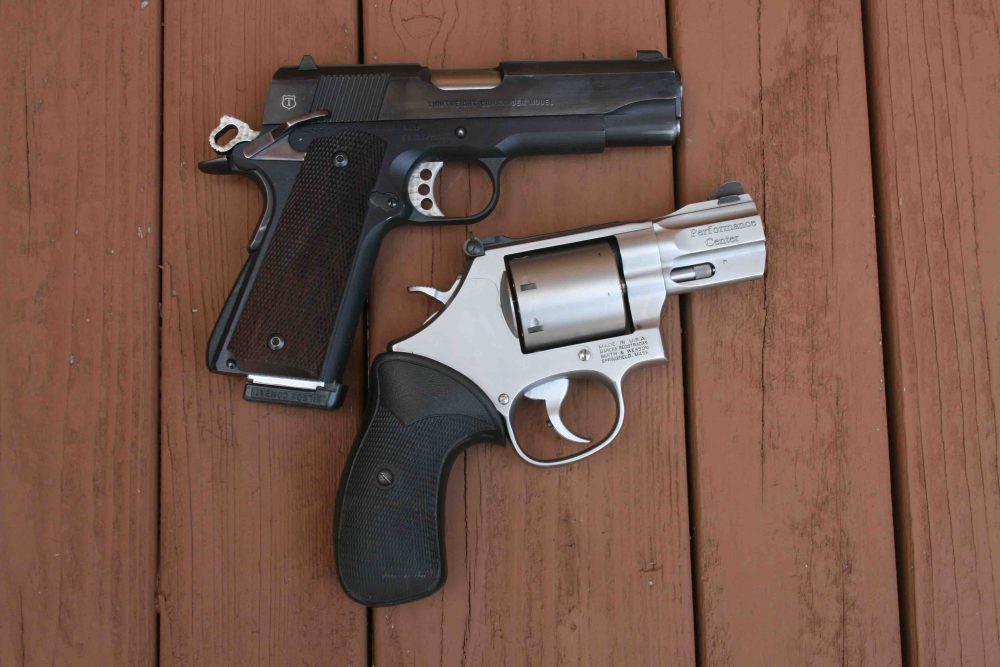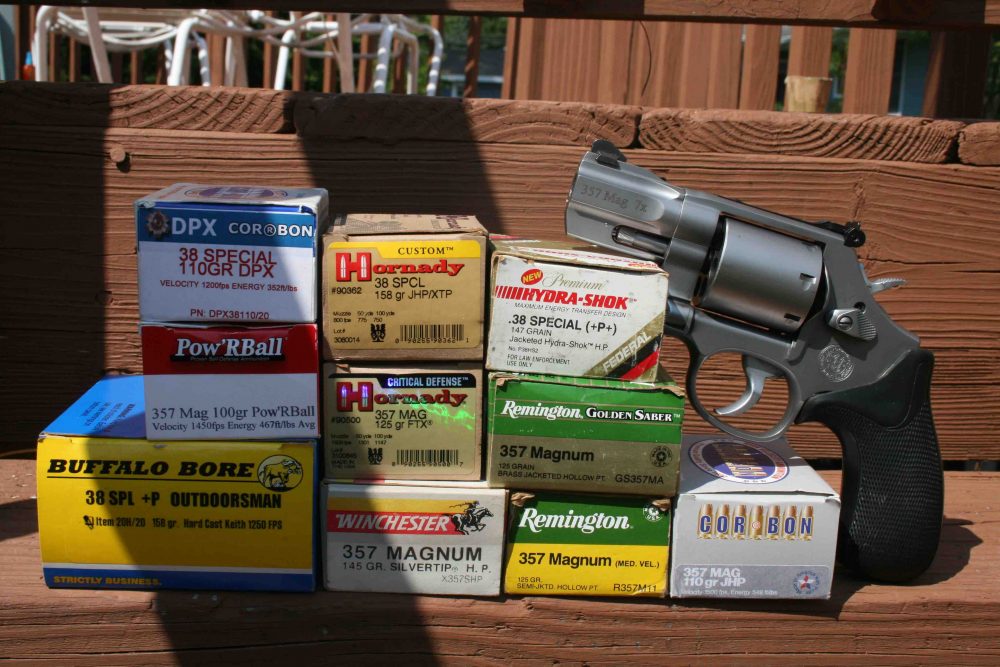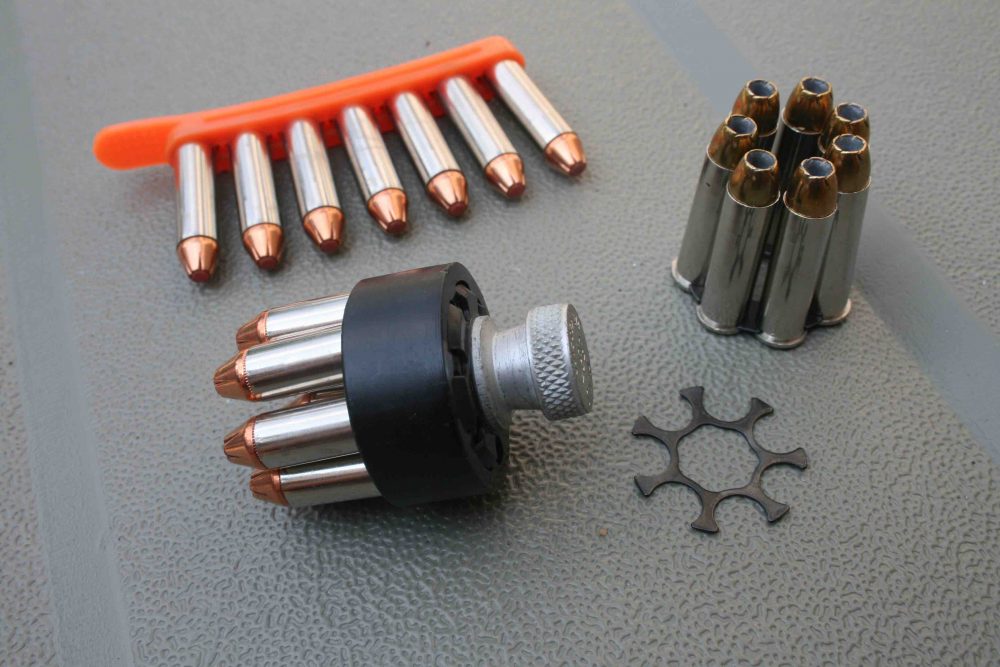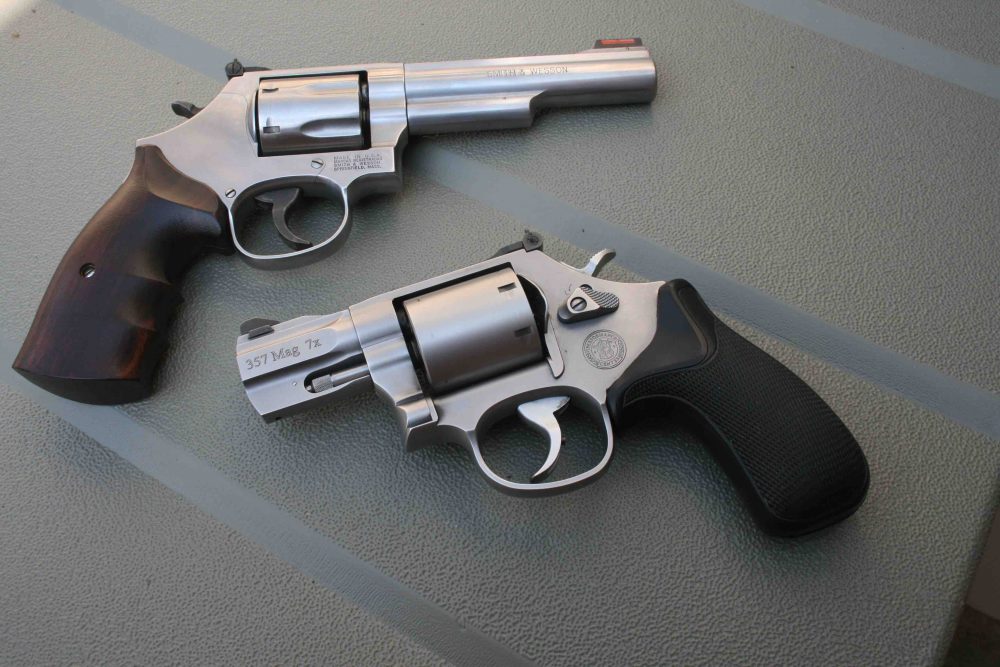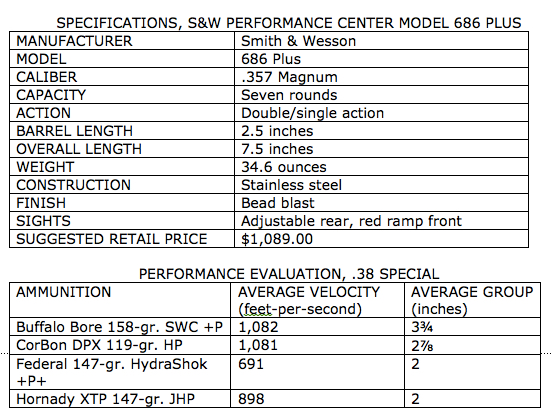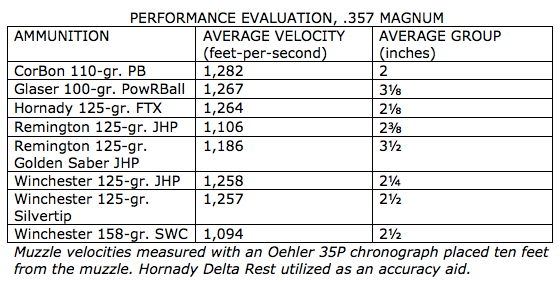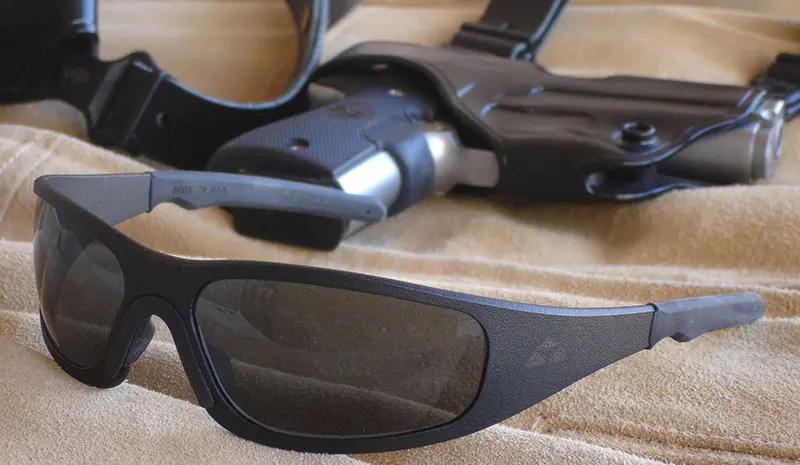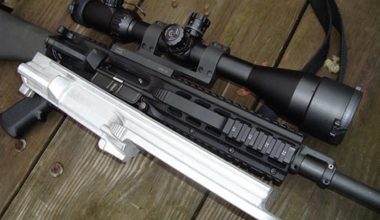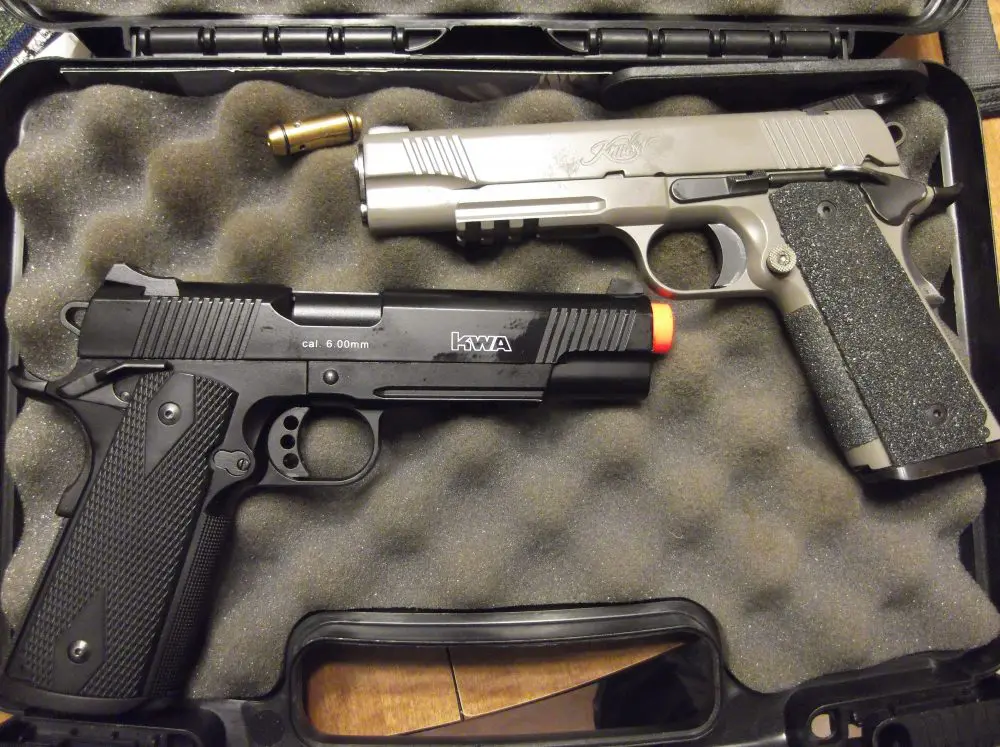Smith & Wesson Performance Center Model 686 is optimized for personal defense.
Like many of my contemporaries, I cut my shooting teeth on a double-action revolver. In the not-so-distant past, revolvers were the tool of choice for those who went in harm’s way, and pistols were seldom encountered in the hands of serious gunmen.
This was especially true in the law enforcement community, where wheelguns were pretty much universal equipment. A few of my police academy classmates were issued Smith & Wesson Model 59 9mm pistols, which the rest of us regarded as the devil’s tool. Real cops carried revolvers, not jammatics, we reasoned. Obviously our vision of the future was a bit clouded.
Over the last 30 years, the paradigm has shifted 180 degrees, and today’s law enforcement professionals are armed just about exclusively with automatic pistols. Responsible citizens have followed this lead and come to prefer auto pistols over revolvers by a very wide margin. Sales of small-frame, easy-to-hide revolvers do remain strong, but by and large, we live in a square-gun world.
Handsome wood grips are standard on PC 686. These were swapped for an ancient set of rubber Pachmayr Compac grips (2601) for greater shooting comfort when firing hot loads.
Despite the dominance of the auto pistol in the personal defense and LE markets, there is still a viable niche for the double-action (DA) revolver. In fact, a very strong case can be made that the DA revolver may, in fact, be the better choice for certain applications. What may surprise some folks is the fact that revolver technology has not stood still.
Some of the classics may no longer be available, but you can now choose from an even wider variety of possibilities boasting features that were unthinkable a generation ago.
For many years, Smith & Wesson has been synonymous with high-quality revolvers. At the 2014 SHOT Show, I noted an interesting variation based on the intermediate-size L-Frame Model 686 Plus .357 Magnum. This Performance Center version sported a 2½-inch barrel, round butt, and a host of other desirable features. Not a pocket popper, but a serious fighting handgun designed for concealed carry.
Although it looked like a winner, other new S&W offerings caught my eye too, and the 686 was shifted to the back burner. But as fate would have it, I soon found a spot where it would be the perfect fit.
PC 686 proved a very capable performer when shooting at combat speed.
Table of Contents
BEHIND ENEMY LINES
I live in a state that can hardly be described as gun friendly, and my travels often take me across the state line into New York, either on personal or professional business. Several years ago, New York passed legislation effectively prohibiting anyone other than an active law enforcement officer from carrying a handgun with more than seven rounds in the magazine. As a retired law enforcement officer, I can legally carry a handgun, but am restricted to the seven-round limit.
When teaching in New York of late, I have utilized a 1911 pistol and haven’t missed a beat. Small pistols and revolvers are fine as backup to more serious hardware, but I prefer something a little more formidable, even when going about on personal business. Might that short-barreled 686 be the answer?
To cut to the chase, I requested a Performance Center Model 686 (PC 686) Plus for test and evaluation, to see if it fit into my plans. One quality that struck a chord with me was the seven-shot cylinder, which offered an additional round over my old S&W Combat Magnum with 2½-inch barrel. A few other bells and whistles included in this package helped seal the deal for me. Let’s see what the PC 686 Plus has to offer.
Many shooters still prefer a revolver to a pistol for personal defense.
DETAILS
Smith & Wesson introduced the intermediate size L-Frame line in 1981, and it met with immediate success. A year later, my agency swapped off our K-Frame Model 66 revolvers for the new Model 686, which was a tad beefier than the K-Frame M66, and it was thought the upstart revolver would stand up better to a heavy diet of hot .357 Magnum loads.
Back in the day, it was not unusual to train almost exclusively with light-recoiling wadcutter loads, fire off a cylinder or two of heavy Magnums for effect, and go forth to fight crime. Agencies and officers who did subject their M19s and M66s to high round counts of hot .357 Magnum ammo often found their guns shooting loose or with excessive flame cutting in the top strap just above the forcing cone.
I carried an M686 up until we swapped our revolvers for pistols. I also own a couple of other L-Frames that remain personal favorites. Based on this positive experience, the PC 686 seemed like a good idea.
Like my original M686, the PC copy is crafted entirely of stainless steel. At 34.6 ounces, it’s hardly a flyweight and weighs half a pound more than the Lightweight Commander I’ve used for similar applications. But with the right belt and holster, the PC 686 remains within my personal limit for comfortable all-day carry.
Winchester .357 Magnum 158-grain SWC loads produced this 25-yard group.
A glass-bead finish gives the PC 686 a very handsome yet business-like appearance. The Performance Center logo is present on the left side of the frame, and the words Performance Center are also found on the right side of the slab-sided barrel. Another touch that sets it apart from the regular production M686 is the precision crowned muzzle.
The trigger and the teardrop-shaped hammer are chromed. A critical eye will also note the trigger is about 1/3 wider than that of the standard L-Frame and that it is equipped with a trigger stop to prevent overtravel.
Sighting equipment consists of a fully adjustable micrometer rear mated to a red ramp front sight. The front sight is dovetailed to the barrel, which should make fitting an aftermarket sight relatively easy if you prefer something different.
During testing, I noted a significant disparity between point of aim and point of impact in the various .38 Special/.357 Magnum loads fired. The micrometer rear will help you dial in your load of choice.
As indicated earlier, the 686 Plus sports a seven-shot cylinder. The unfluted cylinder is cut to accept full moon clips for a faster reload. I also had on hand a number of seven-shot HKS speedloaders, which saved the day.
Remington Golden Saber .357 Magnum 125-grain JHPs were manageable and accurate in PC 686.
FALSE START
It took several months for my dealer to take delivery of the PC 686, and I was getting a bit anxious. As luck would have it, my T&E sample arrived right along with the good weather and I was looking forward to putting it through its paces. My past experience with Performance Center guns had been very good, with trigger action on revolvers tested clearly a cut above production grade. Sadly, this was not the case here.
In their advertisement, Smith & Wesson promotes this gun as having a Performance Center tuned action. To say the least, I was more than a little disappointed. Was I being too picky? I passed this particular specimen off to a few other revolver shooters, two of whom were Governor’s Twenty PPC shooting champions. When I solicited their opinions, they agreed 100% with my assessment.
As you can see, the popular notion that writers always get “special” guns simply isn’t true. Back to S&W it went and in ten days or so, my gun was back with an entirely new attitude.
Double-action pull was now much smoother, certainly something that would help me be my best. To their credit, Smith & Wesson got it right. But for a gun with a suggested retail price of $1,089, this issue should have been caught before this particular gun left the shop.
PC 686 along with HKS seven-shot speedloader and Spyderco Karahawk represent a formidable combination.
SHOTS FIRED
Trigger action on my sample PC 686 was much improved over my initial encounter. On my Lyman Trigger Pull Gauge, single-action pull tripped just under four pounds, with double-action averaging 10½ pounds. Best of all, the annoying hitch in the DA stroke was gone. Time to head out to the range to see what the PC 686 could do.
The PC 686 frequently went to the range with me over the next few weeks. At typical combat distances, it proved to be a very capable performer on both steel and cardboard targets. Like any quality revolver, it was 100% reliable with all ammo tested regardless of bullet shape, including light target loads, frangibles, and service quality .38 Specials and .357 Magnums.
The PC 686 is shipped with a set of sexy wooden grips that indeed make quite the fashion statement. But when shooting hot .357 loads at speed, the gun seemed to shift in my hand and deliver a pretty fair dose of felt recoil.
Pistol or revolver? LW Commander (top) is roughly the same size as the PC 686 but has a very different manual of arms. Choose the system that works best for you.
One cool thing about revolvers is that if, for some reason, the grip doesn’t suit your hand, salvation is only a screwdriver away. I quickly retrofitted a set of rubber Pachmayr Compac grips and my problem was solved. My hand was quite a bit happier and my revolver had that early 1980s old-school look.
Taking a turn on the state-mandated qualifications course also yielded some very gratifying results. I’ll confess to dropping a single shot, but the other 49 hits were centered in a pie-plate-sized pattern in the chest of the target. I’ll just have to write off that miss as operator error and live with it.
Rummaging through my garage, I was able to find four different varieties of .38 Special and eight different types of .357 Magnum. With this unusual assortment of ammo, I once again set off for the range to fire the requisite five-shot groups.
Targets were placed 25 yards distant, and I used a Hornady Delta Rest as an accuracy aid. Group size was measured, rounded off to the nearest 1/8 inch, and then averaged. Muzzle velocities were measured with an Oehler 35P chronograph.
PC 686 can handle light or heavy loads with any shape bullet. This is a big advantage for new or infrequent shooters. Sample gun proved 100% reliable.
Predictably, the shorter barrel did reduce muzzle velocities a step or two down from a service-sized gun. It should also come as no surprise that the hot .357 loads ran considerably faster than the .38 Specials tested, but at a cost of increased muzzle flip and felt recoil. Ultimately, that will influence what sort of loads you want to carry for personal defense.
Quite frankly, accuracy potential was far better than I expected. Five-shot groups ran from a little over two inches to just under four inches. Short-barreled revolvers are as intrinsically accurate as their long-tubed cousins, but the short sight radius often plays havoc with our ability to shoot with any degree of precision.
My single best effort was a 1 7/8-inch group with CorBon 110-grain JHPs. I was also able to achieve very good results with other loads in both .38 Special and .357 Magnum. The gods must have been smiling on me this particular day.
Without question, shooting qualities were very good. With the right ammo combination, I wouldn’t feel the least bit put out carrying the PC 686 to protect my hide.
Tuff Strips combined with HKS seven-shot speedloaders give user great flexibility when combat loading. Full moon clips (right) are an all-or-nothing proposition.
DARK SIDE OF THE MOON
The PC 686 features a cylinder cut for the use of full moon clips, which theoretically speed up reload times. While I can appreciate the value of moon clips in a game gun, I consider them to be a limiting factor in a handgun carried for self-defense. With moon clips, reloading becomes an all-or-nothing proposition. This pretty much contraindicates a tactical reload.
A few trainers of my acquaintance no longer teach the tactical reload. That might be all well and good when we discard a partially depleted magazine from our pistol and replace it with a fully loaded one containing 17 rounds to await possible action, but with a low-capacity handgun like a revolver, I don’t want to give anything away I don’t have to.
The ability to replace spent rounds without discarding live rounds remains absolutely critical. My spare ammo is carried in a couple of HKS speedloaders supplemented by seven-shot Tuff Strips from Tuff Products.
With my gun, this was pretty much a moot point. Three full moon clips were provided. I tried them with Federal, Hornady, and CorBon ammunition. All dropped into the gun lickety split, but I could not close the cylinder.
My gun was as clean as a whistle, with no debris under the extractor star. Go figure. Perhaps another brand of moon clip would do the trick, but for me at least, moon clips were a non-starter.
Limited Edition Model 686 has a five-inch bull barrel and seven-shot cylinder. PC 686 (bottom) was a worthy stablemate.
WARTS AND ALL
Left to my own devices, my normal carry gun is a polymer-frame 9mm autoloader with 15-round magazine. But reality often has a nasty way of kicking us in the teeth, and on occasion I cannot lawfully carry my gun of choice. In those instances, the PC 686 would get the call.
I’m not a fan of small guns for primary carry, as they do not give me a warm, fuzzy feeling. I’ve long counseled that one should carry the biggest gun they can carry discreetly, and three seasons of the year, the PC 686 would be just the ticket. With the right clothing, I could probably even get by in the summer.
I realize lots of folks would be put off by the size and weight of the PC 686, but I don’t see them as obstacles. Different strokes for different folks.
I often catch a raised eyebrow or two when carrying a revolver for personal defense. I’m not about to enter into that tired debate of revolvers versus auto pistols, but there are some things the wheelgun does exceptionally well. In fact, it may be the superior tool for extreme close quarters confrontations.
Is the Performance Center upgrade worth the added expense over a production-grade Model 686? Only you can decide that. I like that extra shot on board and the better sights. The reworked action is superior to recent production S&W guns I’ve encountered.
My sample PC 686 addresses my individual needs in a personal-defense handgun while meeting the most restrictive legal standard for concealed carry in the country. Considering its positive attributes, it’s a keeper.
SOURCES
SMITH & WESSON
(800) 331-0852
www.smith-wesson.com
PACHMAYR
(800) 225-9626
www.pachmayr.com
TUFF PRODUCTS
(877) 883-3776
www.tuffproducts.com
